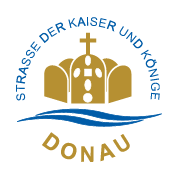The Danube exquisite
The Danube exquisite
Long before film became a formative medium for the perception of landscapes, historical events and shared memories, it was literature or even music. If one only thinks of the great river earworms, where images and vibrations immediately arise, such as "On the beautiful blue Danube" by Johann Strauss or the symphonic poem "My Fatherland" and the melody "The Vltava" by Bedrich Smetana, which is particularly well known from it, then it becomes clear how anchors and perceptions arise, shape and also differentiate. For example, New Orleans on the Mississipi, where jazz has become formative.
The Danube in the upper course from Germany via Austria, Slovakia and Hungary, which has been prepared for tourism as the "Road of Emperors + Kings" for many years, is characterized by very special literary testimonies, which are based on myths, legends and history. At the beginning there is certainly the Nibelungenlied, which is said to have been recorded at the end of the 12th century at the court of the Passau bishop Wolfger von Erla. The Nibelungen's journey from the Rhine to the Danube, where the towns of Plattling, Passau, Eferding, Pöchlarn, Melk, Mautern, Tulln, Vienna, Hainburg and Esztergom play a special role, is considered a German national epic. Similar works for other countries and cultural areas are, for example, Homer's Odyssey for Greece, Dante's Divine Comedy in Italy or William Tell for Switzerland. They are baked in like DNA, and even today we can still see that it is not only the historical fascination, but also the perception between peoples and even for current argumentation and political narratives still plays a role. This puts us in the middle of what always makes a European river like the Danube.
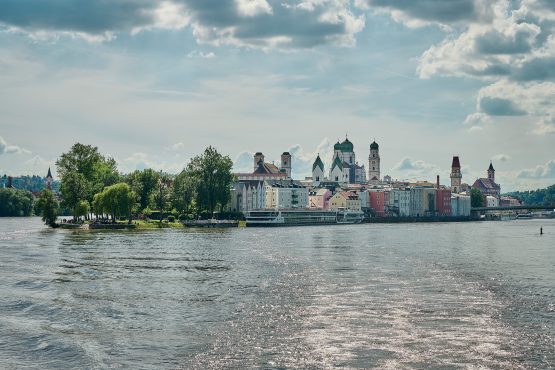
The Rhine with its masculine Western European charge and, in contrast, the Danube with its feminine Eastern European character. The Danube is the queen of Europe among the rivers. And one finds these traces also, if one analyzes the literature of the 19th and 20th century a little bit and takes it as a travel guide to the Spirit, to the discovery journey for Bavaria, Austria and Hungary as a basis. And as soon as Hungary is included, the Danube also radiates into Central and Eastern Europe, into the Balkans. This is a mutually enriching and again and again destroying alliance, from which one cannot get out, if one also wants to be able to understand current political processes. Whether Kriemhild, Blessed Gisela, Empress Maria Theresia, Empress Sissi or the mermaid Isa - deep down in the Jochenstein rock: these are striking female figures that contribute significantly to the myth of the Danube.
In addition, there is the fascination of the nobility with emperors and kings, castles and palaces, as well as religious witnesses and testimonies such as saints, but also the many churches, cathedrals and monasteries. These are the landmarks, the formative elements that give this area its uniqueness.
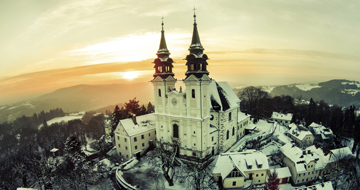
Emperors and kings - these are fairy-tale themes that fascinate not only children. They also exert a fascination on adults. The Danube is especially occupied with such mythical, fabulous materials. For example, the Danube mermaid Isa, who, according to legend, lives at the bottom of the Jochenstein rock in a magnificent crystal fairy-tale castle.
On the one hand, she was considered a helper with orientation problems and at the same time she was always seduction. A golden-haired beauty who has a sister on the Rhine with the Loreley. She shows the boatmen the way in foggy weather. But woe betide them if they follow the wonderful song, they will be taken away and have to stay at the bottom of the river forever. Events of war, fate, natural phenomena, madness and, of course, eroticism, the allure of women and the seductiveness of men - all these are the materials from which the sagas along the Danube have emerged. Two particularly distinguished storytellers in Upper Austria are Helmut Wittmann and Dagmar Fetz-Lugmayr, who have edited and collected the Danube sagas in numerous books. The entire Danube is prepared in a book published in 2007 "The Danube in legends, myths and fairy tales" on almost 400 pages. This shows what a wealth of experiences and tales about the Danube have been created over the centuries. One may be curious which stories our time will still add here.
Here, in the first place, is the Danube essay volume of the Trieste literature professor Claudio Magris, published in 1986. He has set a literary monument to the Danube, which still has a unique position. Despite the iron curtain that separated the Upper Danube with the southeast of the river until 1989, he was able to realize an overall representation from the source of the Danube to the Black Sea. Herta Müller, the future winner of the Nobel Prize for Literature, who was still living in Romania at the time, was already on his radar. But his tribute to Elias Canetti, another Danube Nobel laureate in literature from Ruse, also impressed. In Ruse, Bulgaria, well over 1,000 kilometers from Vienna, he writes, people "go to Europe when they go up to Vienna." The overall perception of the people along this river never fails to impress. Although the communication possibilities do not come close to today's conditions, they nevertheless created a Danube and Europe consciousness that is culturally, culinary and politically very impressive from today's point of view and where one has the feeling that in the meantime the fragmentation of this space is rather regressing than progressing. In his overall characterization, which he makes on page 30 of this fascinating book, it says: "...The Danube is consequently partly a tributary of the Rhine and flows into the North Sea rather than into the Black Sea: Triumph of the Rhine over the Danube, revenge of the Nibelungs against the Huns, domination of Germania over Central Europe. Since the Song of the Nibelungs, the Rhine and the Danube have faced each other with distrust. The Rhine is Siegfried, Germanic virtue and purity, Nibelung loyalty, heroic chivalry, intrepid love of doom, German soul. The Danube is Pannonia, the empire of Attila, oriental, Asian flood, which at the end of the Song of the Nibelungs makes the Germanic values and virtues sink; by Burgundians sealing their fate - a German fate... The Danube is the German-Hungarian-Slavic-Roman-Jewish Central Europe, which is polemically opposed to the Germanic empire: a "hinternational" ecumenism, as the Prague Johannes Urzidil enthusiastically called it." .- so an Italian writes about this space. It will not become easier with Europe.
Michael W. Weithmann from Passau is an expert on the Danube. His Danube books impress with historical competence and narrative brilliance. He prepares the entire river historically and writes on p. 15: "The Danube in its contradictoriness represents the soul of Europe...One is required to reach very far back into history in order to be able to comprehend that specific cultural, ethnic and religious shaping of the Danubian multi-ethnic state..."
And a third book that left a fascinating impression on me because of its structure and unusual research is the exhibition catalog "Danube- People, Treasures & Cultures - a Journey from the Black Sea to Schallaburg) which was published on the occasion of the big Danube exhibition 2020 at Schallburg Castle in Lower Austria. Here the Danube ends at the Schallaburg in Lower Austria. But the references and influences especially from Southeastern Europe become particularly clear, which were also formative for the K + K Danube Monarchy, for the development and for the perception of the Habsburg Empire.
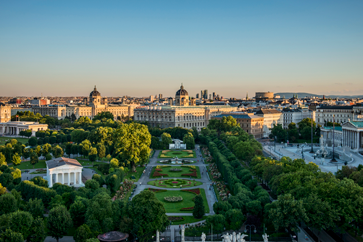
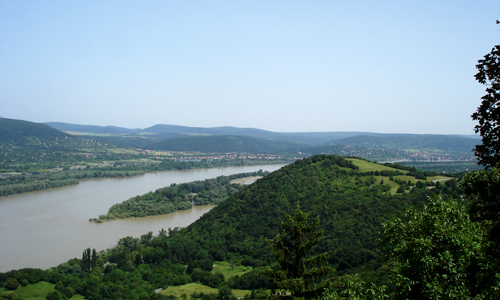
Dr. Gerd Burger has written a literary journey along the Danube in 2018. Joseph von Eichendorff, Ernst Trost, Gertrud Fussenegger or Karl Markus Gauss I would like to mention here. The Danube Literature Nobel Prize winners from Elias Canetti to Ivo Andric, Imre Kertész, to Elfriede Jelinek show that this space is not narrowed to a few trains of thought, but has breadth.
As a representative I would like to quote Karl-Markus Gauss who writes under the heading "The Teaching of the Danube": "Nothing new happens, unless it would be tested on the Danube, and nothing old can disappear nor reappear from happy oblivion, which has not already sunk on the Danube or ghostly reappeared on one of its banks. Countless nationalities have settled along this mighty river, which has seen and suffered everything that the peoples of Central and Southeastern Europe have accomplished or done to each other. What we shudder at, at the grimace of chauvinism, at the hatred of peoples who depend on each other, but who are periodically driven against each other, at fanaticism, at narrowness, at the destruction of nature, at the leveling tread of progress - all this we find on the Danube, but also what fascinates us in the world: the beauty of a sometimes lovely, sometimes rugged, often surprising landscape; the richness of culture, the diversity of ways of life, which influence and enrich each other continuously, not trump them; serene art and passionate joy of life, often proven magnanimity of the people; their defiant strength to develop the special against the standardization and to insist on what makes them different...The Danube does not tolerate hegemony, not even the hegemonic claim of the well-intentioned. Simultaneity is its historical destiny and its doctrine. To do justice to this doctrine is the simple thing that is so often difficult."
And this spirit shapes the literature, whether poetry or prose, whether sagas, fairy tales or political reflections, whether folkloristic or anthropological. To read the Danube means to come across all the landmines, but also possible solutions for a modern Europe in the 21st century. And the many nobles, emperors and kings, but also popes, bishops and saints - they all contributed in their claim to exclusivity, to their own truth. But there have also always been those who have recognized that only diversity, tolerance, makes this space something special, something worth living in and worth protecting.
I wish you much pleasure and insight when you dive into the literary and historical reflections of the Danube region.
For this I recommend:
Claudio Magris, Danube - Biography of a River, dtv Verlagsgesellschaft 1986
Michael W. Weithmann, The Danube - History of a European River, Böhlau Verlag and Verlag Friedrich Pustet, Regensburg 2012
Danube - People, Treasures & Cultures - a Journey from the Black Sea to Schallaburg, Schallaburg Kulturbetriebsgesellschaft m.b.H., Schallaburg 2020
Emil Brix, Erhard Busek, Central Europe Revisited, Kremayr & Scheriau Publishers, Vienna 2018c
Gerd Burger, Donau - eine literarische Flussreise, Dr. Peter Morsbach Verlag, Regensburg 2018
Helmut Wittmann, Das Donausteig Sagenbuch, Tyrolia Gesellschaft, 2021
Dagmar Fetz-Lugmayr, Sagenhaftes Linz: Geschichten einer Donaustadt, Verlag Anton Pustet, Salzburg 2022

Prof. Georg Steiner is a retired tourism director of Linz and a great Danube connoisseur and expert. He has been involved with the Danube for many years and has worked with great commitment in various projects along the Danube from (Eastern) Bavaria via Austria on the development of its tourist attractiveness and charge. He was the managing director of ARGE Die Donau - Straße der Kaiser und Könige for many years and is still involved around the Danube.
